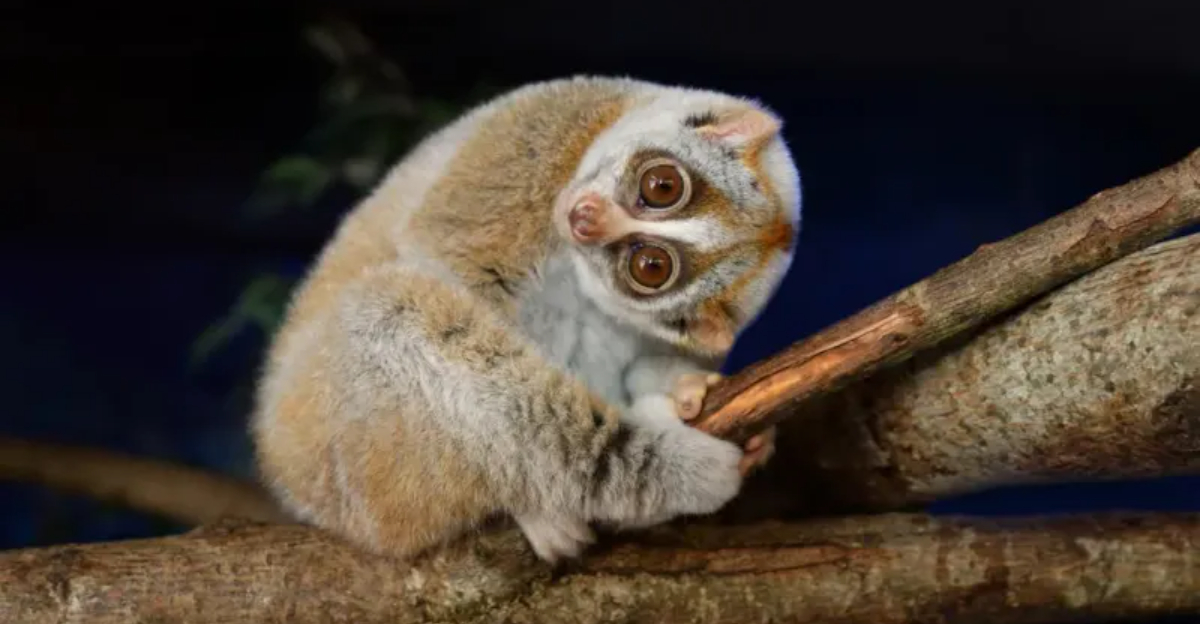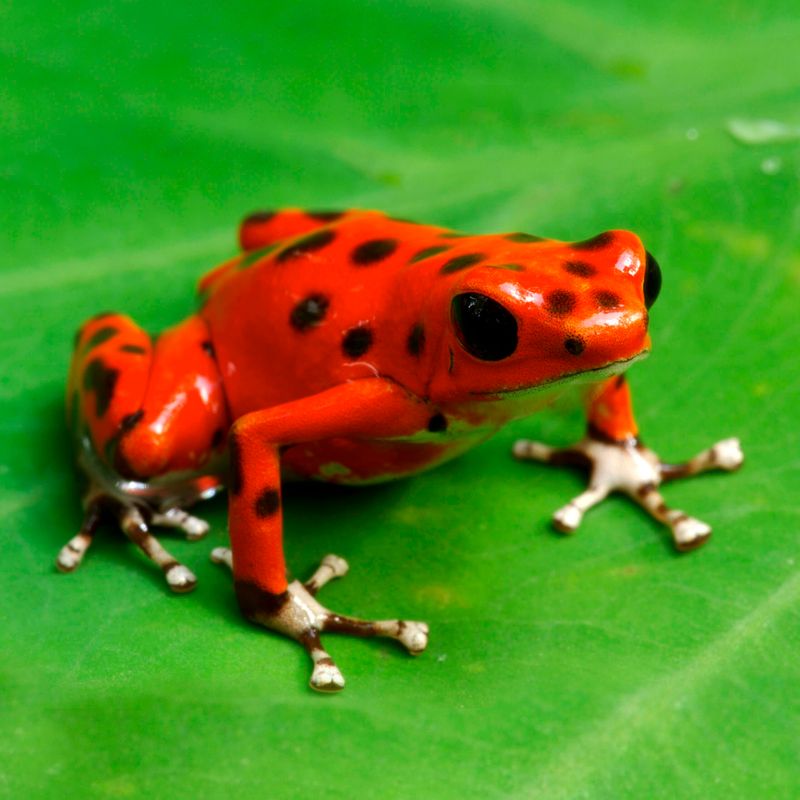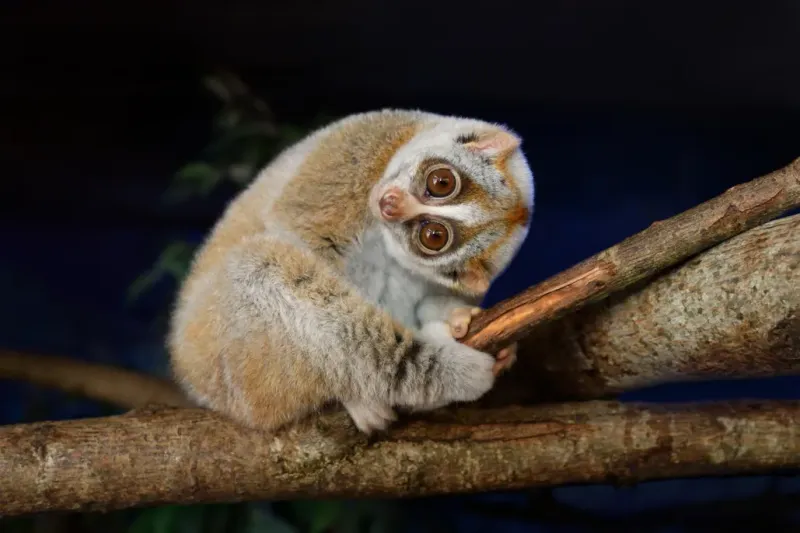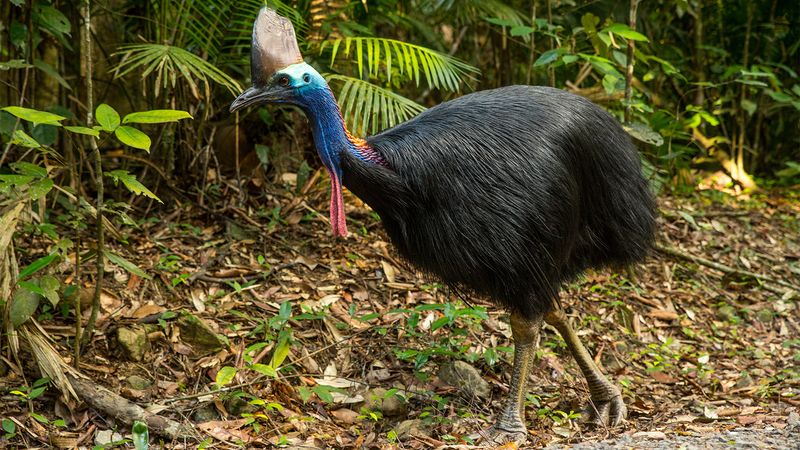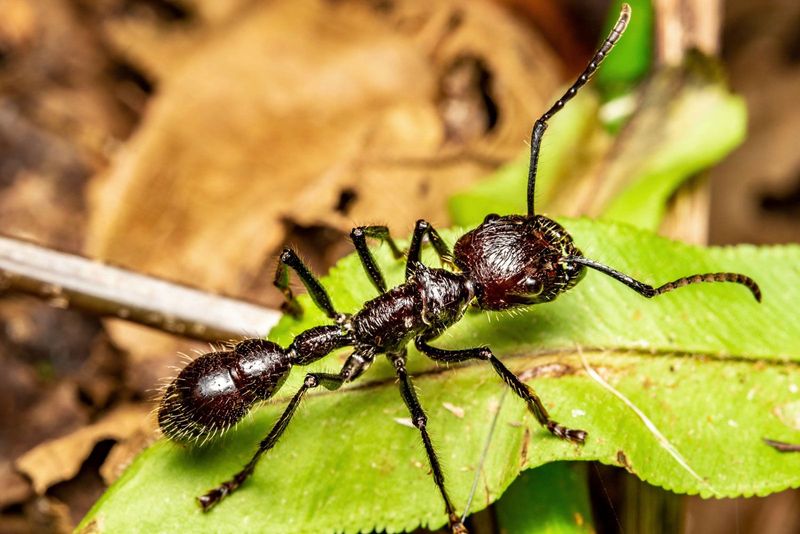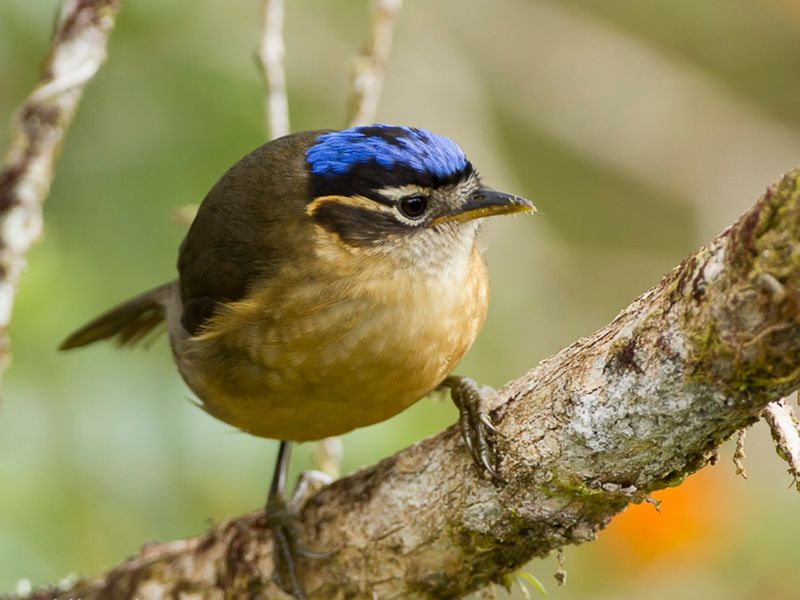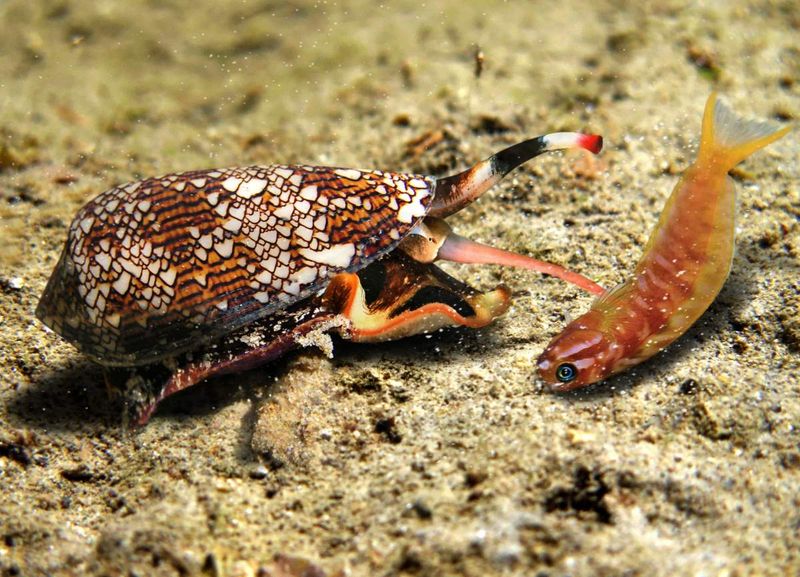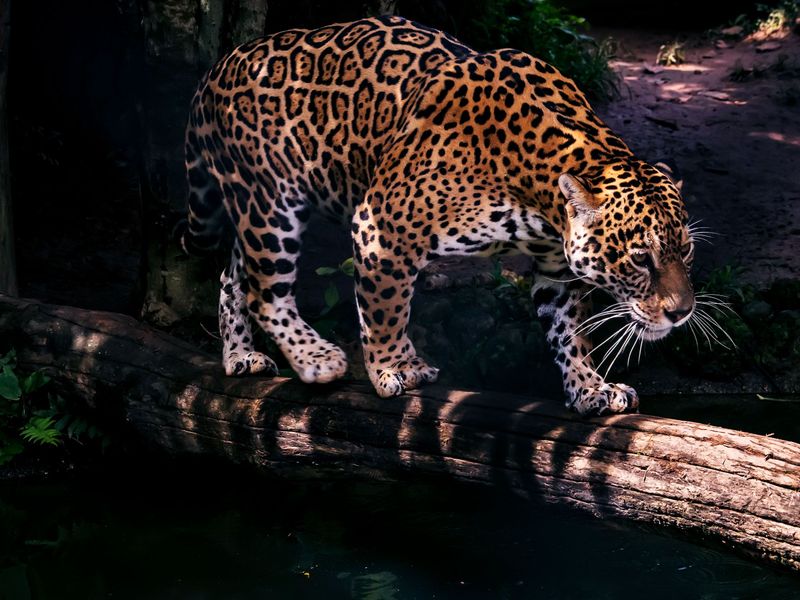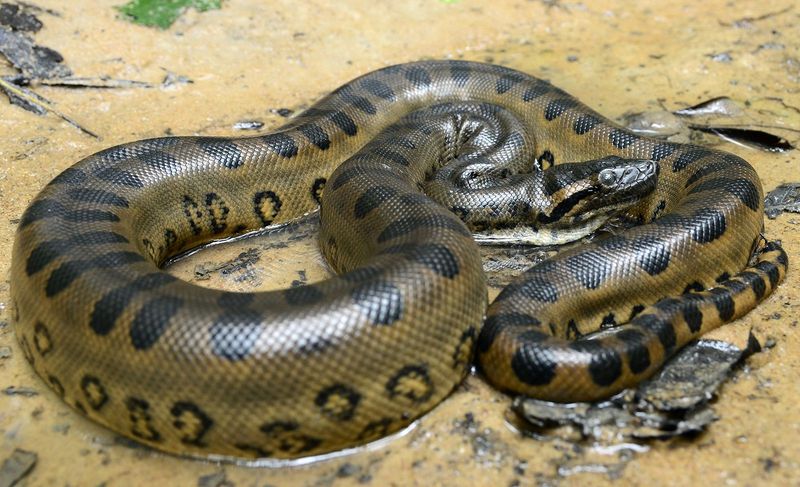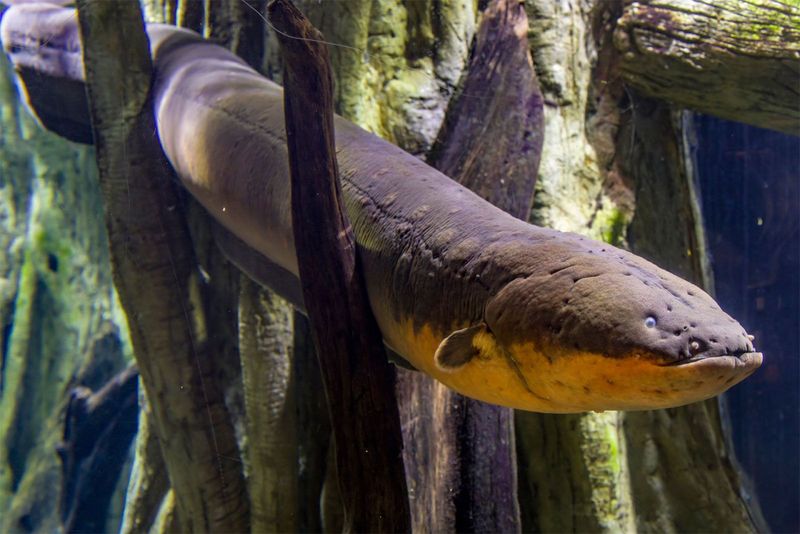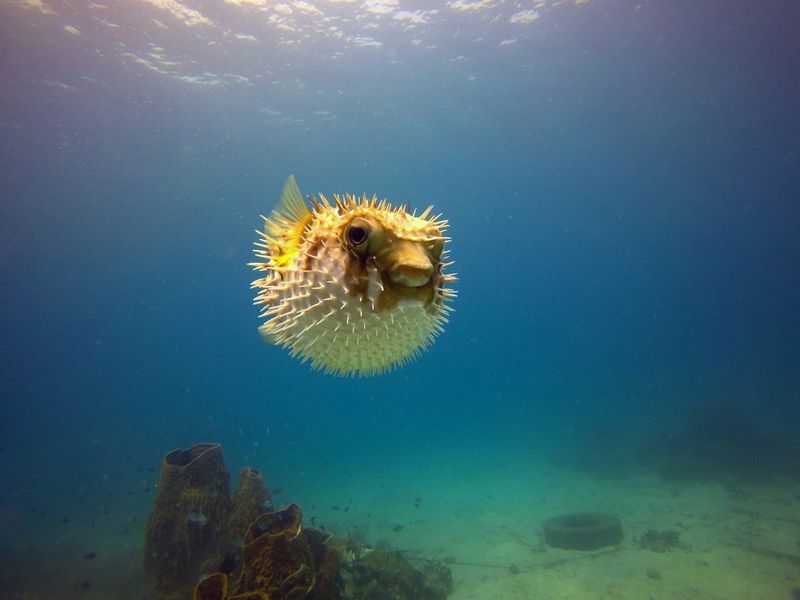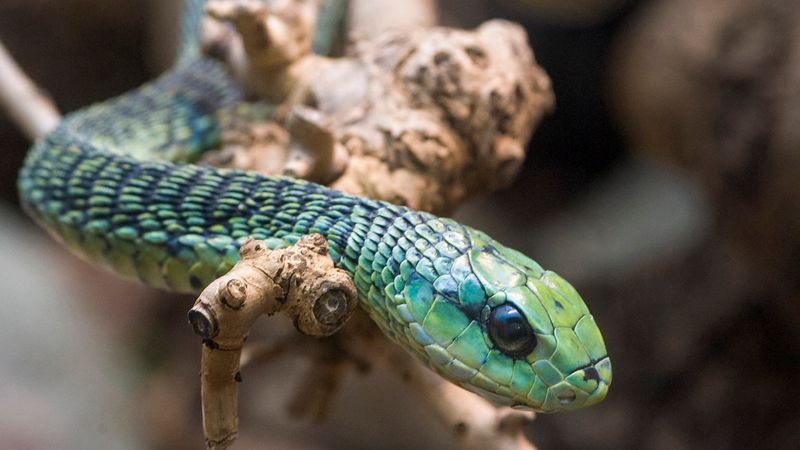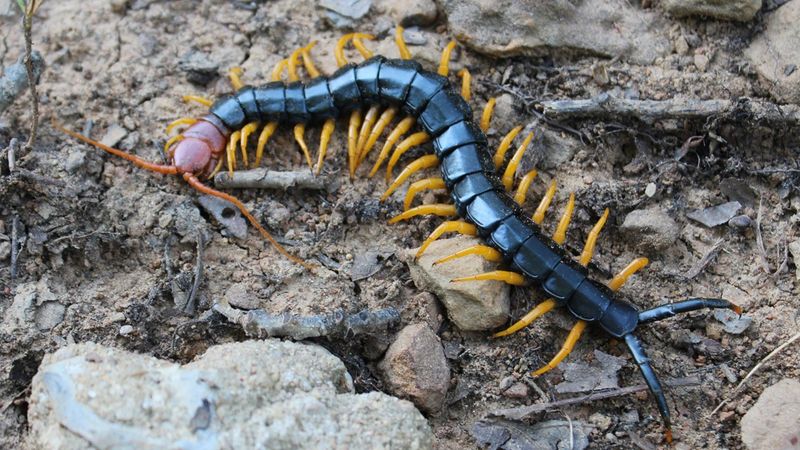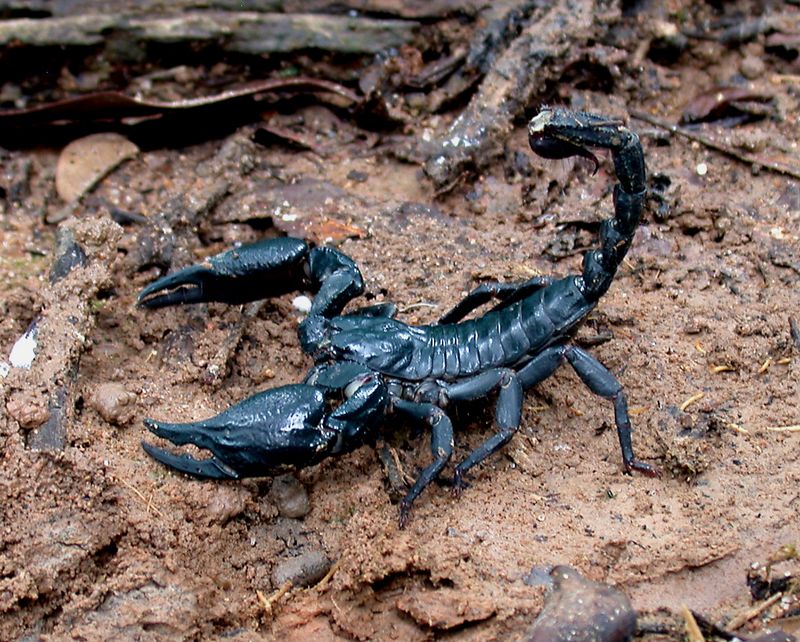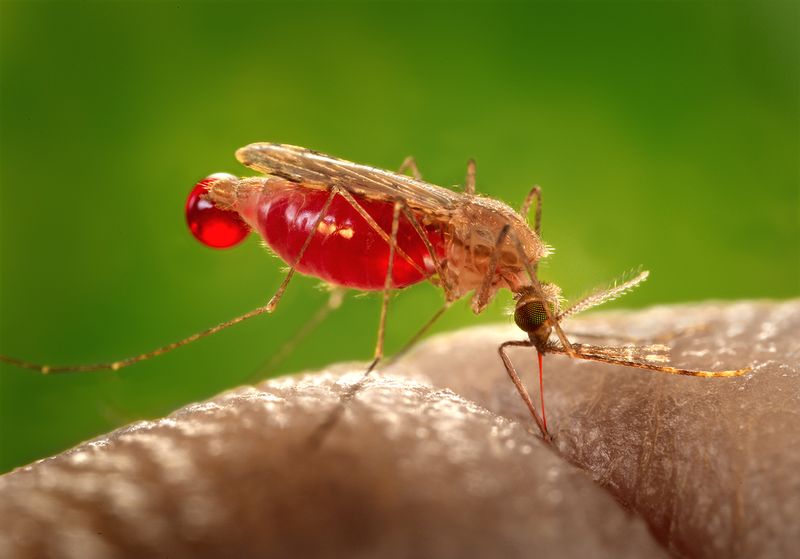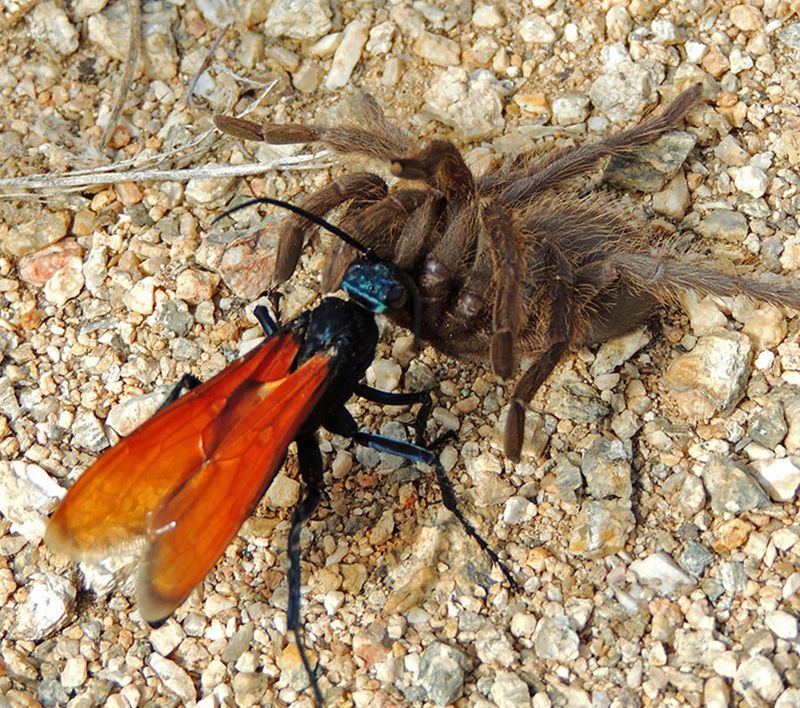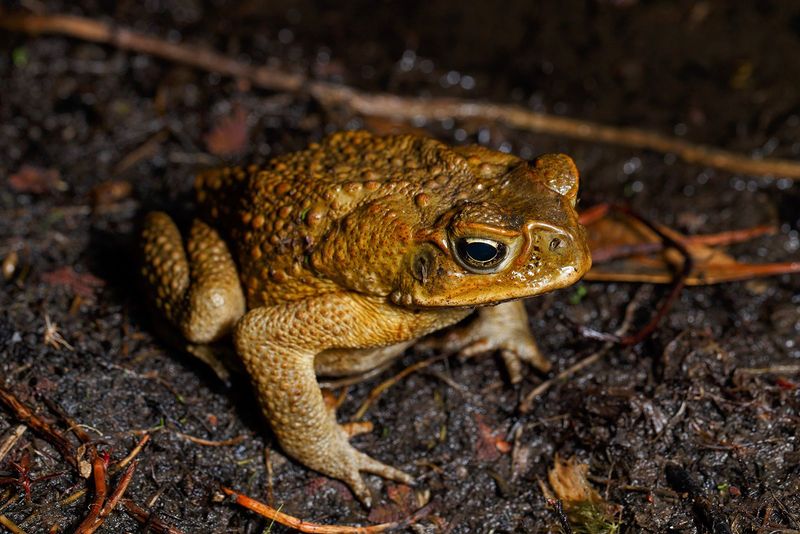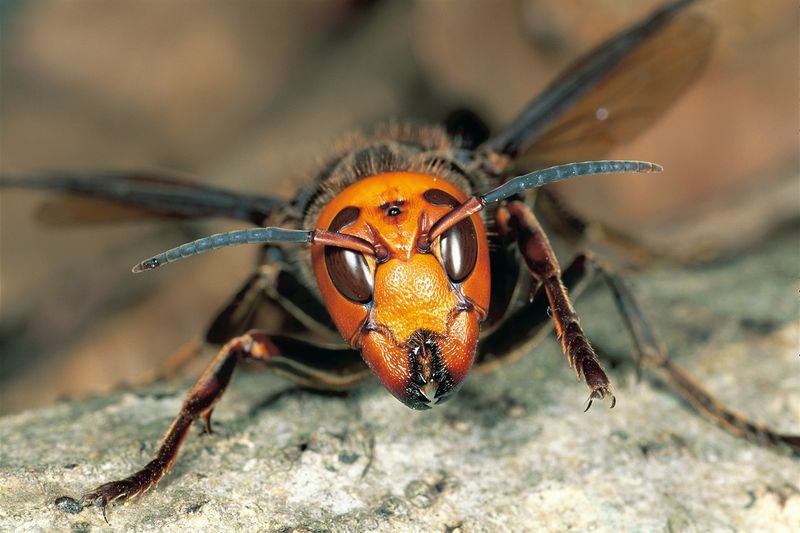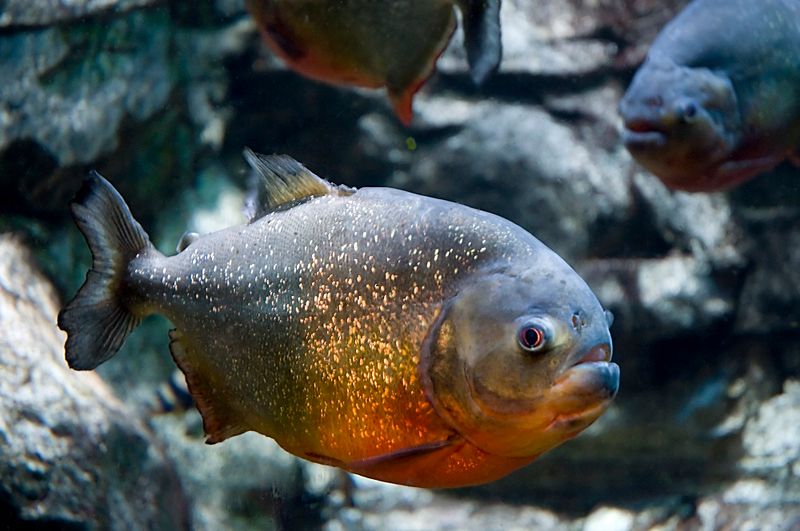The jungle is a vibrant and diverse ecosystem—but it’s also home to creatures that are far more dangerous than they appear. Some look cute, others seem harmless, but all of them pack a surprising punch.
Poison Dart Frog
Bright and beautiful, the Poison Dart Frog captivates with its striking colors. Despite its small size, this creature harbors enough toxins to end the lives of 10 adult humans. Found in the humid rainforests of Central and South America, these frogs are a testament to the adage that appearances can be deceiving.
Their vibrant hues serve as nature’s warning sign to predators. While their beauty might tempt a touch, it’s wise to admire them from afar. The indigenous tribes cleverly use the frog’s toxic secretions to poison their darts for hunting.
Slow Loris
With large, soulful eyes and a gentle demeanor, the Slow Loris appears utterly harmless. Native to the rainforests of Southeast Asia, it’s a nocturnal creature that moves with deliberate slowness. However, this endearing primate harbors a venomous bite, thanks to toxic glands in its elbows.
When threatened, the Slow Loris raises its arms to mix venom with saliva, delivering a bite that can induce allergic reactions or even anaphylactic shock. Conservationists strive to protect these creatures, whose cuteness often makes them targets for the illegal pet trade.
Cassowary
The Cassowary, with its striking blue neck and helmet-like casque, commands respect in the jungles of Australia and New Guinea. This flightless bird, despite its beauty, is equipped with dagger-like claws that can deliver fatal kicks.
When threatened, the Cassowary charges with surprising speed, using its powerful legs to defend itself. While attacks on humans are rare, they are often severe. The bird’s imposing presence serves as a reminder of the power and unpredictability of nature in the wild.
Bullet Ant
The Bullet Ant’s name is no exaggeration; its sting is akin to being shot. Found in Central and South American rainforests, these ants are infamous for delivering the most painful sting known to humans. The pain can last up to 24 hours, leaving the victim in agony.
These ants use their venom to defend their colony, and a single sting can cause waves of burning pain. Despite their small size, they are a force to be reckoned with in the jungle’s intricate hierarchy.
Blue-Capped Ifrit
The Blue-Capped Ifrit, a seemingly innocuous bird from Papua New Guinea, holds a deadly secret. This small, colorful avian stores batrachotoxin in its feathers, a potent poison that deters predators.
Bird enthusiasts are often surprised by this natural defense mechanism. Handling the bird can result in numbness and irritation, a testament to its toxic nature. The Ifrit’s vibrant appearance, coupled with its hidden danger, makes it a fascinating subject for both birdwatchers and researchers alike.
Cone Snail
In the warm, coastal waters near jungles, the Cone Snail lurks. Its beautifully patterned shell belies a lethal weapon—a venomous harpoon-like tooth capable of delivering a sting that causes paralysis, and in extreme cases, death.
Divers and snorkelers admire its stunning shell, often unaware of the danger beneath. The snail’s venom is a cocktail of toxins, making it a subject of scientific interest for its potential medicinal applications. However, it remains a testament to the hidden threats in serene aquatic environments.
Jaguar
The Jaguar, often overshadowed by its cousins, is a jungle powerhouse. With the strongest bite of any big cat, it can crush skulls and pierce turtle shells. This apex predator roams the forests of the Americas, a symbol of strength and stealth.
Its rosette-patterned coat provides perfect camouflage in the dappled light of the jungle. Jaguars play a crucial role in their ecosystem, maintaining balance by keeping prey populations in check. Their elusive nature makes them both a challenge and a thrill for wildlife photographers.
Wandering Spider
The Brazilian Wandering Spider, one of the world’s most venomous arachnids, doesn’t spin webs. Instead, it roams the jungle floor, hunting for prey with its long legs and agile body. Its venom can cause serious medical symptoms in humans.
This spider’s name reflects its nomadic lifestyle, always on the move. Its presence is a reminder of the unseen dangers lurking in nature’s shadows. Despite its reputation, it’s a fascinating creature, displaying remarkable adaptability and hunting skills in the dense foliage.
Green Anaconda
The Green Anaconda, the world’s largest snake, slithers through the waterways of the Amazon. It kills by constriction, overpowering prey like capybaras and caimans with its immense strength. This serpent’s sheer size and power are awe-inspiring, if not intimidating.
Despite its fearsome reputation, attacks on humans are rare. The Anaconda’s role as a top predator is vital, maintaining ecological balance. Observing this creature in its natural environment is a thrilling, humbling experience, highlighting the untamed wildness of the jungle.
Electric Eel
The Electric Eel, more than just a river dweller, is capable of generating shocks up to 600 volts. This fish uses its electric abilities to stun prey and deter predators—a fascinating adaptation in the jungle’s waterways.
These eels inhabit the murky rivers of South America, their long, slender bodies gliding silently through the water. Although not true eels, their electric prowess makes them formidable hunters. Observing their unique hunting method offers a glimpse into nature’s inventive survival strategies.
Pufferfish
Found near coastal jungles, the Pufferfish may look comically awkward, but it’s armed with tetrodotoxin, a poison 1,200 times more deadly than cyanide. This toxin is a defense mechanism against predators, deterring all but the most determined enemies.
When threatened, the Pufferfish inflates, displaying spines that warn of its perilous nature. Its quirky appearance belies the deadly potential it harbors. This fish is a testament to the idea that nature’s defenses are as varied as they are effective, making it a remarkable subject of marine study.
Boomslang
The Boomslang, a snake with vivid scales, is a stealthy inhabitant of Africa’s jungles. Its potent venom causes internal bleeding, though symptoms may take hours to manifest. This delay can make its bite insidiously dangerous.
Primarily arboreal, the Boomslang blends seamlessly into the foliage, hunting birds and small mammals. While generally shy, it will defend itself aggressively if threatened. Its presence underscores the delicate balance and hidden dangers in the treetops of the jungle, a world apart from the ground below.
Giant Centipede
The Giant Centipede, an aggressive jungle inhabitant, is both fascinating and fearsome. Its numerous legs and elongated body allow it to move swiftly, overpowering prey much larger than itself, such as mice and birds.
Equipped with venomous claws, the centipede’s bite causes intense pain and swelling. It is a master of intimidation, using its impressive size to deter predators. This arthropod exemplifies the jungle’s ability to support a wide range of life forms, each with unique survival strategies.
Asian Forest Scorpion
The Asian Forest Scorpion, often overlooked in the jungle, is armed with a painful sting. Its dark exoskeleton allows it to blend into the forest floor, lurking in shadows and crevices.
Though not usually deadly to humans, its sting can cause significant pain and swelling. This scorpion’s defensive nature highlights the cautious balance of life in the jungle, where even the smallest creatures can pack a powerful punch.
Mosquito (Anopheles Genus)
Tiny yet deadly, the Anopheles mosquito is responsible for spreading malaria and dengue, making it one of the world’s deadliest animals. Found in tropical jungles, these mosquitoes thrive in the humid environment.
Their buzzing presence is both a nuisance and a formidable health threat. Efforts to control mosquito populations are crucial in reducing disease transmission. This small insect’s impact on human populations is profound, illustrating the complex interactions between humans and the natural world.
Tarantula Hawk Wasp
The Tarantula Hawk Wasp may not look intimidating, but its sting is one of the most painful. This wasp paralyzes tarantulas to lay eggs inside, ensuring its larvae have fresh food upon hatching.
Despite its fearsome capabilities, the wasp is not aggressive towards humans unless provoked. Its unique lifecycle and vibrant appearance make it a subject of fascination and caution in equal measure.
Cane Toad
The Cane Toad, introduced to various regions, is more than a pest. Its skin secretes a potent toxin that can kill predators and even harm pets. Once used to control pests in sugarcane fields, it has become an invasive species.
These toads thrive in diverse environments, showcasing nature’s adaptability. Their toxic secretions serve as a warning to anything that might consider them a meal. Their presence highlights the complex consequences of human intervention in ecosystems.
Asian Giant Hornet
Nicknamed the ‘murder hornet,’ the Asian Giant Hornet is feared for its painful sting. Found in forests of East Asia, this hornet can be deadly to those allergic or stung multiple times.
Its aggressive nature and potent venom make it a formidable presence. Beekeepers are particularly wary, as hornets can decimate honeybee populations. The hornet’s role in the ecosystem is complex, balancing its predatory nature with potential ecological benefits.
Red-Bellied Piranha
Mostly scavengers, Red-Bellied Piranhas are infamous for their feeding frenzies during low-water conditions. Their sharp teeth and powerful jaws can strip flesh quickly, a fact that fuels their fearsome reputation.
In their natural habitat, these fish play a crucial role in the ecosystem by controlling populations of other species and cleaning up carcasses. Observing their behavior sheds light on the complex dynamics of life and death in the jungle’s aquatic environments.
